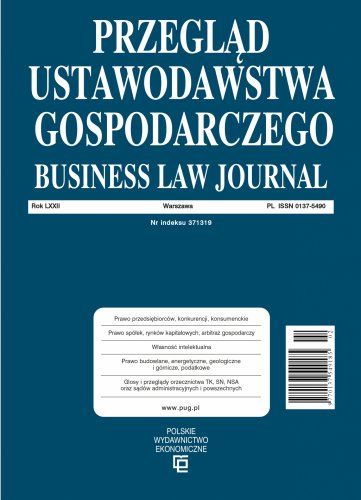Strict price regulation on the heat market — causes and consequences
The main aim of the paper is to indicate the conditions that make strict price regulation on the heat market necessary to ensure the proper functioning of this market, and the consequences of such regulation. The shape of regulations on the heat market has been characterized as a result of the basic features of the heat market and its distinctiveness from other sectors of the energy market. Strict regulation of the heating sector results from the objective need to ensure a level of balance between market participants of the heating sector's specificity. The author indicates to a specific paradox of the system heat market, according to which the possible development of competition on the heat energy market could be counterproductive. This particular situation could lead to ineffective allocation of capital by market participants, including excessive expansion of generation capacity to the extent that this capacity cannot actually be used for the needs of its consumers. This, in turn, would inevitably lead to an increase in costs borne by heat consumers on a given market or could endanger the profitability of a heating company and eventually, to consumers' energy security.
References
Bibliografia/References
Bednarski, B. (2017). Komentarz do art. 44 ustawy — Prawo energetyczne. W: M. Kuliński (red.), Prawo energetyczne. Komentarz. C.H.Beck.
Będkowski-Kozioł, M., & Wrochna, W. (2021). Obowiązki regulacyjne spoczywające na przedsiębiorstwach energetycznych i pozostałych użytkownikach systemu energetycznego. Energetyka Rozproszona, (5–6). https://doi.org/10.7494/er.2021.5-6.91
Boroń, M. (2010). Rola Prezesa Regulacji Energetyki w procesie zatwierdzania taryf. Roczniki Administracji, 10.
Czarnecka, M. & Bando, M. (2021). Czy na rynku sprzedaży ciepła systemowego działa zasada TPA, https://www.cire.pl/artykuly/materialyproblemowe/186911-czy-na-rynku-sprzedazy-ciepla-systemowego-dziala-zasada-tpa , 09.07.2021.
Domagała, M. (2008). Bezpieczeństwo energetyczne — aspekty administracyjno-prawne. Wydawnictwo Katolickiego Uniwersytetu Lubelskiego.
Kamiński, J. (2020). Paradoks rynku ciepła systemowego. Dziennik Gazeta Prawna, 22.06.2020.
Niedziółka, D. (2010). Rynek energii w Polsce. Difin.
Muras, Z. (2020). Uproszczona metoda zatwierdzania taryf dla kogeneracji — uprawnienie czy obowiązek? Internetowy Kwartalnik Antymonopolowy i Regulacyjny, 6(9). https://doi.org/10.7172/2299-5749.ikar
Muszyński, I. (2020). Komentarz do art. 45 Prawa energetycznego. W: M. Czarnecka, & T. Ogłódek (red.), Prawo energetyczne. Ustawa o odnawialnych źródłach energii. Ustawa o rynku mocy. Ustawa o inwestycjach w zakresie elektrowni wiatrowych. Komentarz. C.H.Beck.
Pawełczyk, M. (2018). Monopole naturalne i przedsiębiorstwa użyteczności publicznej jako determinanty pierwotne sektora energetycznego w aspekcie polityki konkurencji. W: M. Królikowska-Olczak (red.), Sektory infrastrukturalne — problematyka prawna. C.H.Beck.
Szwedziak-Bork, I. (2016). Nadużywanie pozycji dominującej przez przedsiębiorstwa ciepłownicze na lokalnych rynkach ciepła. Internetowy Kwartalnik Antymonopolowy i Regulacyjny, 5(4). https://doi.org/10.7172/2299-5749.IKAR.4.5.3
Wierzbiński, M. (2015). Ocena systemu regulacji cen ciepła sieciowego w kontekście rozwoju przedsiębiorstw ciepłowniczych. Zeszyty Naukowe Uniwersytetu Szczecińskiego, (854); Finanse, Rynki Finansowe, Ubezpieczenia, (73).
Woszczyk, M. (2010). Komentarz do art. 45 pr. en. W: M. Swora, & Z. Muras (red.), Prawo energetyczne. Komentarz. Wolters Kluwer.

